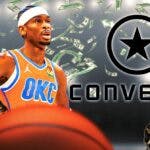The last time a new Collective Bargaining Agreement (CBA) came to the table, NBA basketball did not begin until Christmas Day of 2011. A stalemate caused the NBA to lose out on games for approximately 2 months. Fortunately the league and its players did not need another lockout to help through a new agreement, with a new deal being struck on December 15th.
The last CBA had multiple loopholes, which players and franchises have taken advantage of for the past 5 years. This new deal had the intention of plugging those flaws, attempting to make the league a fair system for all parties. Although the new deal still needs to be ratified in the next month, it's good news for everyone that there will be no basketball missed next season.
Due to that point, the main winners here are the fans, but they aren't the only ones. Lets look into a few of the major winners and a couple of the biggest losers of the new CBA deal.
WINNERS
It doesn't exactly come as a surprise that the man that will benefit most from the new CBA is National Basketball Players Association's president, Chris Paul.
The star Los Angeles Clippers point guard and his contract will benefit in a number of ways in the new deal. Firstly the Over-36 rule (the Over-36 rule takes out the incentive for teams to offer four or five year contracts to players of a certain age) was changed to the Over-38, meaning his next contract will not be affected.
Secondly, the annual raises for players with full Bird rights will rise from 7.5% to 8%, meaning Paul will make approximately $180k more a season. Not only Paul benefits from this, the Clippers also profit because they increase the dollar value of a five-year contract only they can offer.
Thirdly, the new CBA will calculate maximum salaries off the full cap, meaning Paul’s maximum 2017-18 salary jumps from around $33.9 million to $36 million even without an increase in the cap estimate.
Teams with stars already on their roster
When Carmelo Anthony forced his way from the Denver Nuggets to the New York Knicks, the league made rash decisions while trying to avoid similar future situations. With the changes, they hoped making players wait out free agency would lead them to re-sign with their current teams, who could offer longer contracts and more dollars.
Not so surprisingly, players and teams found ways to get around the new rule. Instead of seeing these stars stay with the teams that had drafted them, we saw elite players like LaMarcus Aldridge and Kevin Durant walk, leaving their previous teams with nothing.
Common sense has prevailed and veteran extensions are back. Reports show that the CBA has added an exception allowing teams to choose one qualifying player to extend, meaning their contracts would run a total of six years in some circumstances. This may ring a bell for some, as this is very similar to the exception that allows teams to extend a further fifth year on rookie contracts.
This is only good news for teams for those small market teams trying to re-sign their big name guys. The Indiana Pacers can go ahead and offer a lucrative extension to Paul George before his contract even ends after next season. Of course, PG13 would have to meet the criteria of either making the All-Star team, winning the MVP award, or Defensive Player of the Year.
D-League Players
The NBA will begin something much like the National Hockey League has utilized for years. Two way contracts will be introduced, leading to a further two spots on each NBA teams roster. Two way contracts give teams the ability to send down and recall those two players to their NBA D-League affiliate whenever they please, giving those young and talented guys more of a chance to prove their worth in the big time.
Another aspect that will also affect the young fringe players will be the rise of minimum salaries. This season, the lowest-paid players in the league (minimum salary rookies) make about $540,000. Next season minimum salaries will be boosted right around the 50 percent mark, meaning those same minimum-salary rookies will take home a cool $810,000 instead.
LOSERS
Unfortunately, the reason some of these changes have been made is due to the hole that Kevin Durant left in Oklahoma. These changes are nice and all, but it's two years too late for Sam Presti and the Thunder.
This wont be the first time that OKC have been the victims of cruel CBA timing. The ‘Rose Rule‘ enforced in 2011 caused subsequent tax problems for the Thunder due to Kevin Durant's previously signed contract growing in value. Also, the decision to trade James Harden was also in some part due to the luxury tax penalties taking a solid rise in 2011.
I think we all hope that the Thunder can benefit from the new deal in some way and lock up Russell Westbrook for life.
Super-teams
One of the major factors going into this agreement process for owners would surely have been the prevention of what Golden State were able to achieve last summer, assembling one of the most stacked rosters basketball has ever seen.
With the winners of the last three MVP awards now on the same team, changes have been made to help prevent this in the future. The CBA will now tie minimum salaries and cap exceptions to the growth of the cap, meaning the scenario of the loaded Warriors is unlikely to happen ever again.
The same cap implications will apply to teams trying to trade for stars. According to Tim Bontemps reports of the Washington Post, players who have recently been acquired via trade won't be eligible for the designated player extension.




